
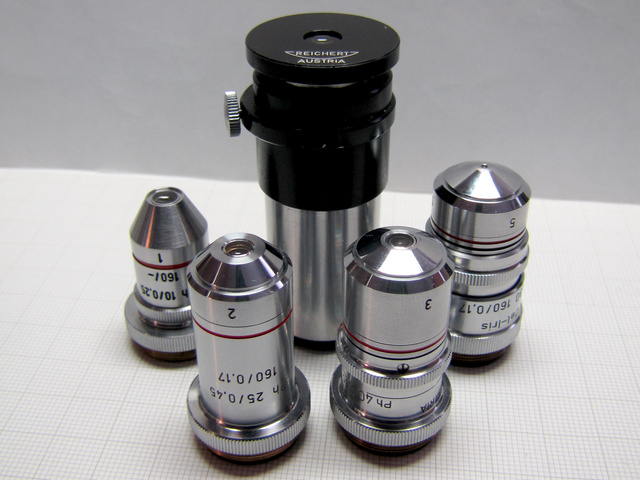
Several years ago I have bought a set of Reichert Phase Contrast objectives quite cheaply as they came without condenser. I did try acquiring a suitable condenser, unfortunately without success, thus I have decided to make my own.
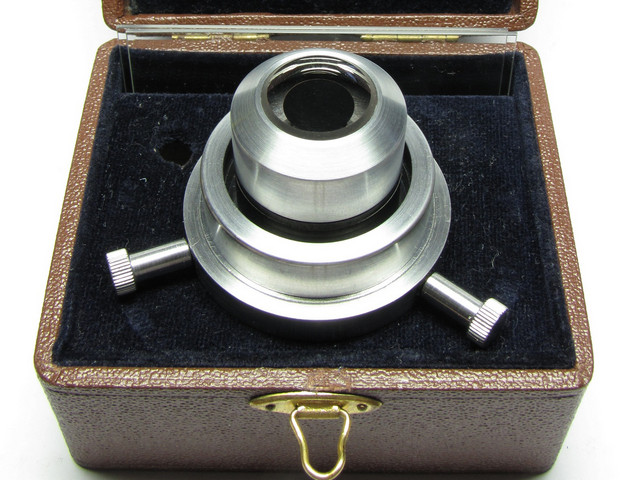
Obviously I needed to start somewhere. Logic dictated that I needed a condenser capable of centring and holding the annuli which I did not have and needed to make. At about the same time of acquiring the objectives I also acquired a Reichert dark field condenser, itself not suitable as a condenser for phase contrast, but, its centring mechanism is quite so.
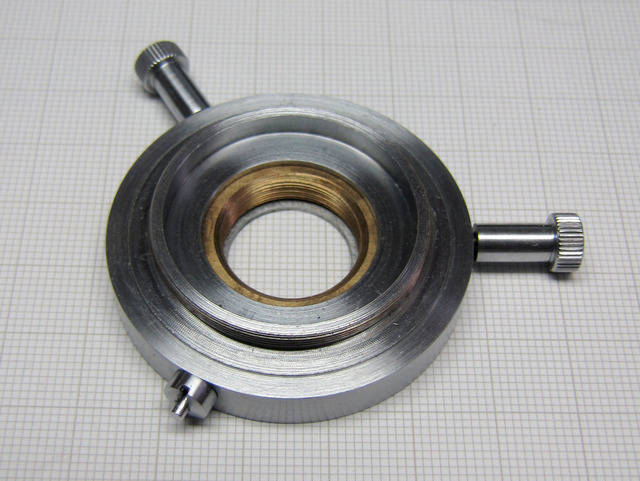
Of course, idea was not to destroy the nice and useable condenser, after giving it a serious thought I've decided to go ahead and use the mounting and centring base of the DF condenser as a base for phase contrast. Now I needed to find a suitable condenser that can easily be made to fit the base.
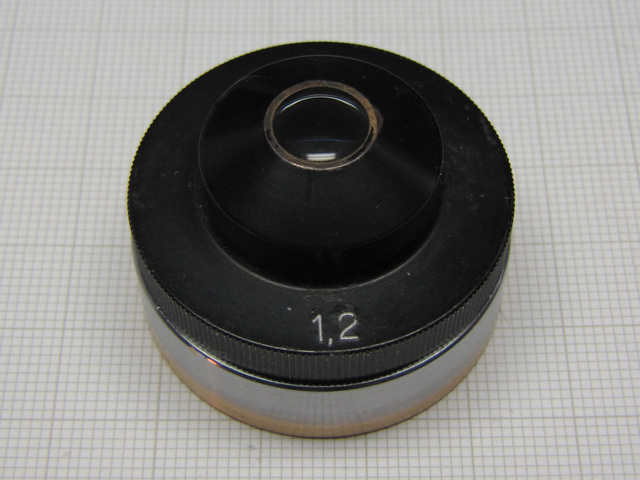
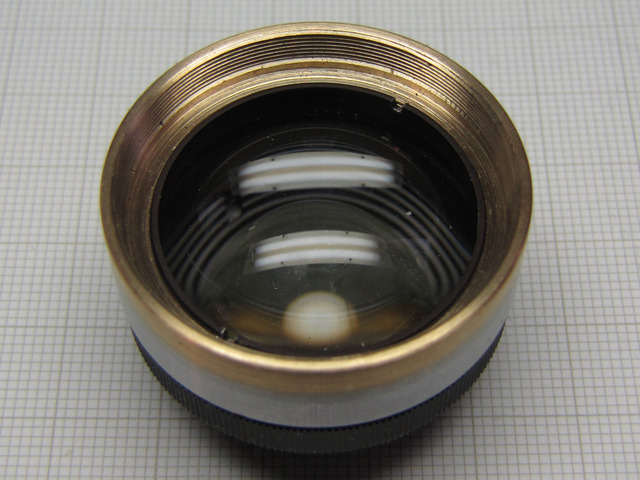
The only thing that was left for me to do was to make the required annuli. In order to make them I had first to establish the exact size that annuli had to have to be useable with the objectives I had. Several methods were suggested in various articles1,2,3 published in Micscape magazine, the most usable method was suggested by Tony Saunders-Davies3 which is a method that I have adopted, although I've introduced a change of a measuring tool and the way it was applied. Using a calliper or a divider is quite suitable but there is slight difference in measurement that appears when one moves the instrument up or down along the optical axis. I placed a thin piece of glass in the exact plane, where the annulus would be placed, providing a single reference plane for attaining accurate measurements. Following the idea it was only obvious to use a graticule, instead of plain glass, which is precisely graduated in fractions of a millimetre providing repeatable measurement accuracy of about 0.1 mm, more than ample as the correction can be achieved by slight vertical repositioning of the condenser.
Developing method further, in order to precisely measure required annuli diameters, I have made a holder which houses the glass graticule to allow measuring the rings of each objective by the use of the phase telescope. The same holder will in a later stage hold one of the annuli providing the means of accurate and repeatable placement requiring minimal centring readjustments.
In his article, Tony Saunders-Davies3 suggested making the ID of the outer ring and the OD of the inner stop piece a tad bit larger than what was actually measured, I've followed the suggestion modifying the sizes by 0.1 mm.

Diagram of a typical phase contrast system
If there are concerns about the reduction of the NA of the condenser by reduction of the maximal aperture caused by the construction and the geometry of the condenser centring mechanism located in the mounting base let me say that by the actual measurement it was verified that there is no condenser NA reduction caused by it. I have measured the NA of the condenser with the aperture reduction caused by the annulus ring #5 ID 13.0 mm (intended to be used with the #5 objective 100/1.30) inserted in the condenser, the measured condenser NA was 0.69 dry and with the immersion oil bridge NA is just above 1.0 i.e. 1.04.
With no annulus inside of the condenser, the maximum measured dry NA was 0.80 and with the oil bridge the full NA of 1.2.
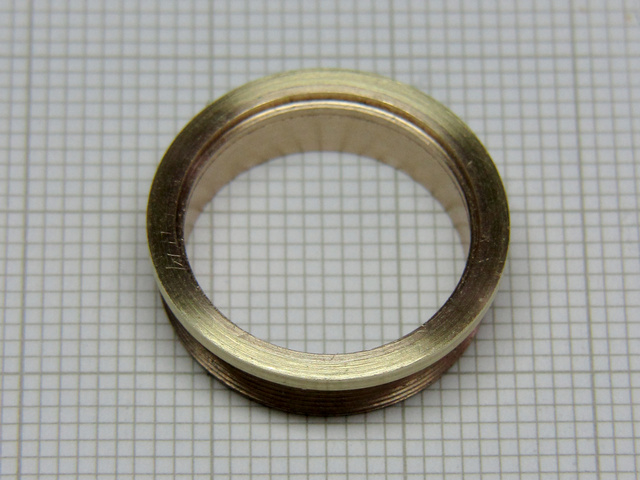
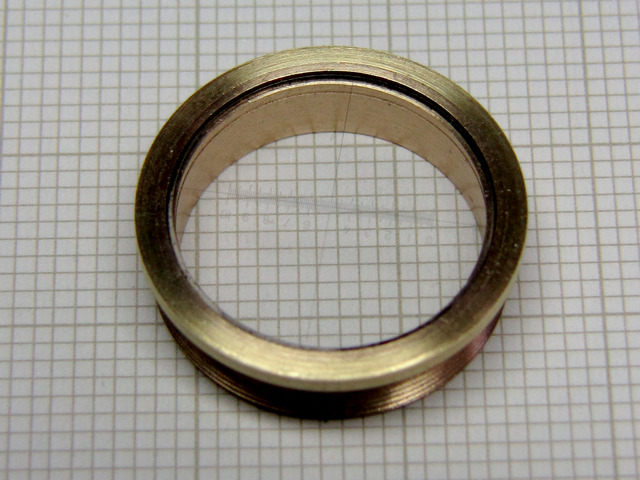
Here the same annuli holder with a graticule in place of annulus ready for taking measurements
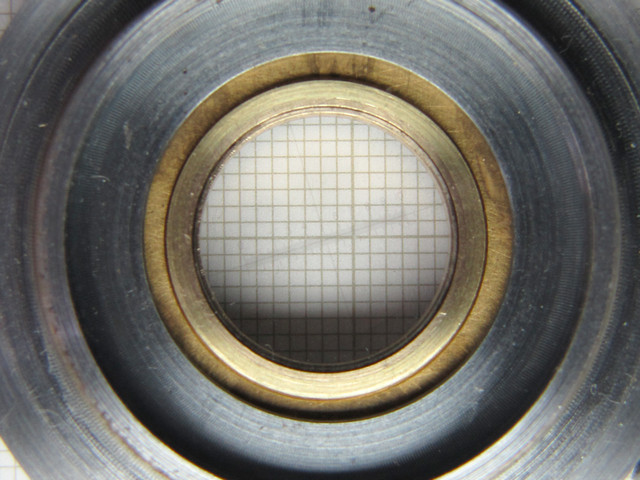
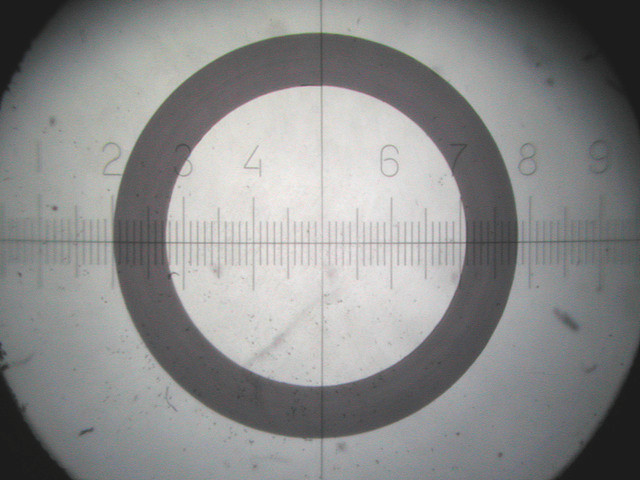
As can be seen at the image above the measurement is straightforward, the OD and ID are read off directly. The 'scope was set for normal use with a test slide on stage focused on the specimen and condenser in normal position for object observation. Then the eyepiece was removed and replaced with the PC telescope which was focused onto the upper image plane, as shown on the image above. The process was repeated for each of the PC objectives. Results of the measurement are shown in the table below, however for making the annuli they were modified as explained elsewhere in the article.
Dust particles, seen on the image above are for the most part located on the graticule itself, removing it was pointless during the measuring as dust would only accumulate again during the tests. Of course, I've cleaned it up before placing graticule back into the measuring eyepiece.
|
Objective |
# |
OD mm | ID mm |
|
Ph 10/0.25 160/- |
1 |
4.30 |
3.30 |
|
Ph 25/0.45 160/0.17 |
2 |
5.80 |
4.40 |
|
Ph 40/0.65 160/0.17 Iris |
3 |
8.00 |
6.20 |
|
Ph 100/1.30 160/0.17 Fluor Oel-Iris * |
5 |
13.00 |
10.30 |
To ensure accurate concentricity each annulus had to be assembled and soldered in a small jig designed and made for it. Without the use of the assembly jig, positioning and concentricity of the annuli would be questionable.
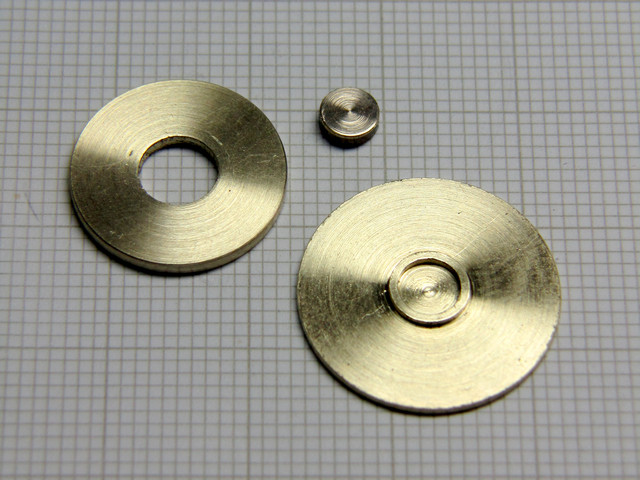
The image above shows machined parts of the annulus and the assembly jig
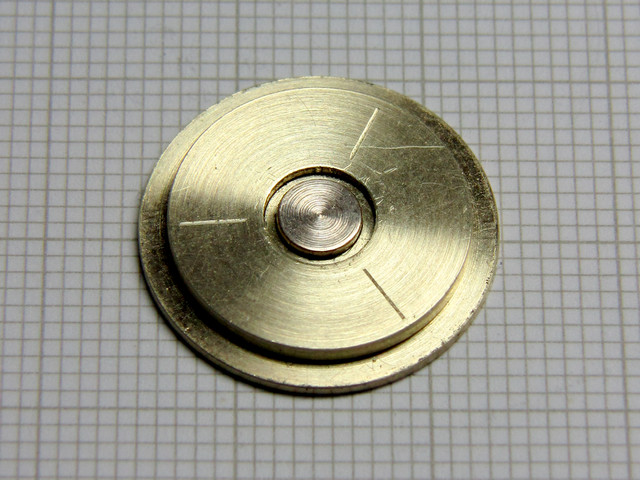
Here the annulus parts are placed into the assembly jig ready for soldering
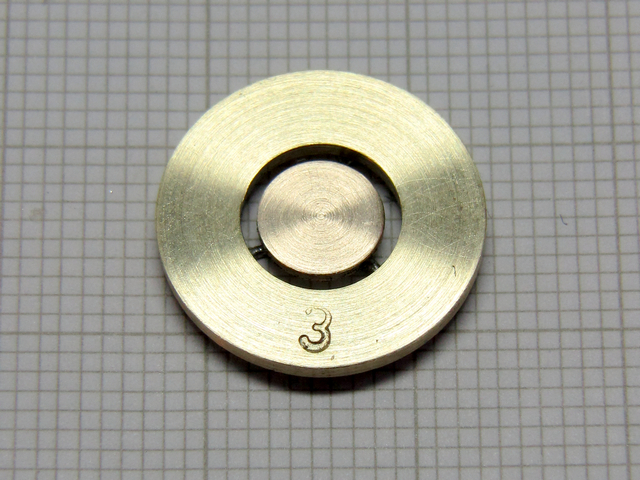
One of the assembled annuli, soldered together and stamped with a number of a corresponding objective
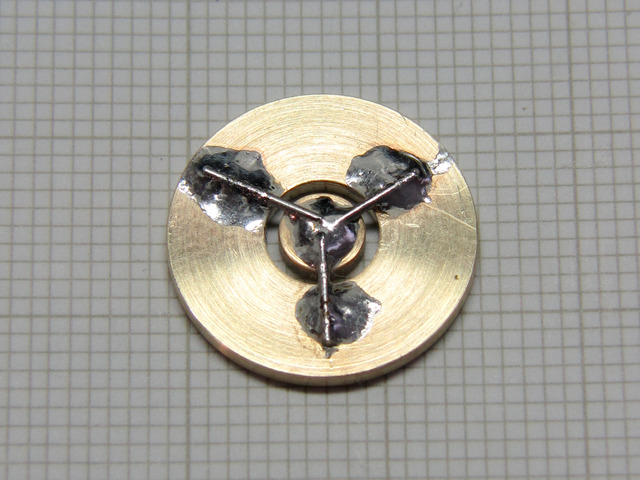
The underside showing how the soldering was performed
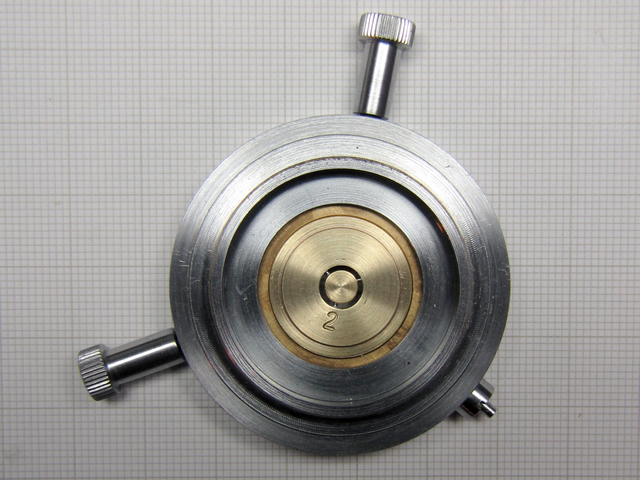
Annulus #2 placed in its holder
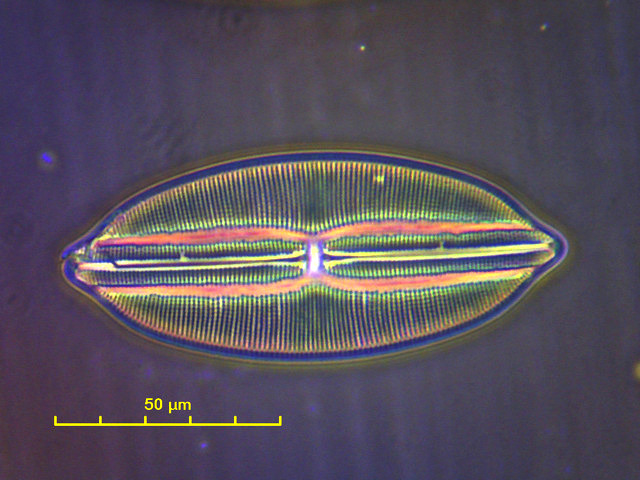
A test shot of Navicula lyra, Test Plate - 8 Forms by Klaus D. Kemp
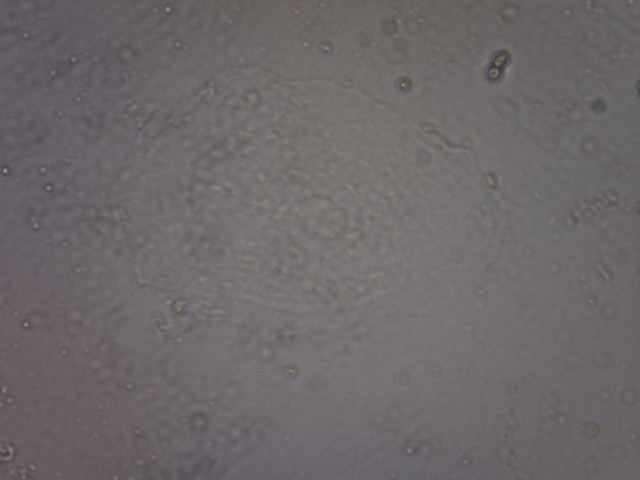
For comparison here is the bright field image of epithelial cell from inside cheek swab, mounted in water
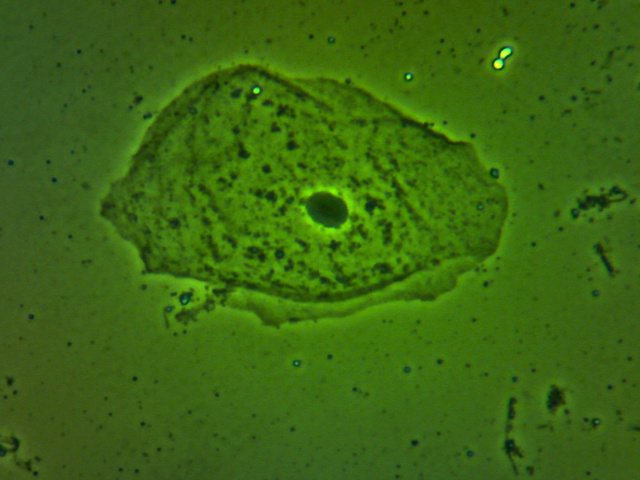
And here is the phase contrast image of the same epithelial cell
Needless to say that there still is a load of stuff that I need to learn about phase contrast microscopy as this excursion has provided me with the tool which I have yet to explore the use of.

Reichert Dark Field Condenser parts that are easily put back together
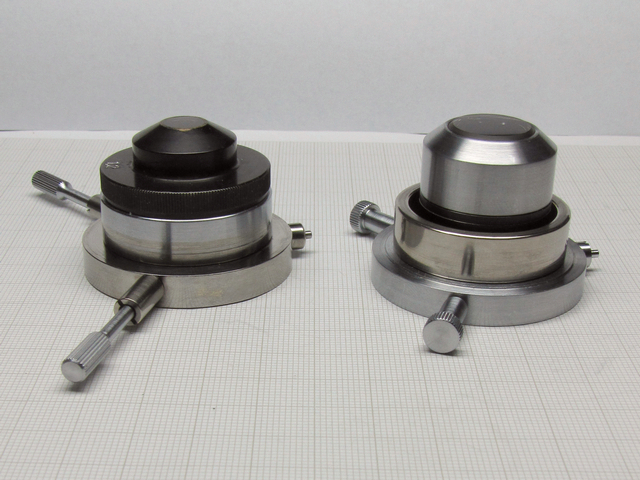
The image, on the left, shows newly made base mounted with modified Zeiss condenser with, on the right, Reichert DF condenser which was used in the experiment
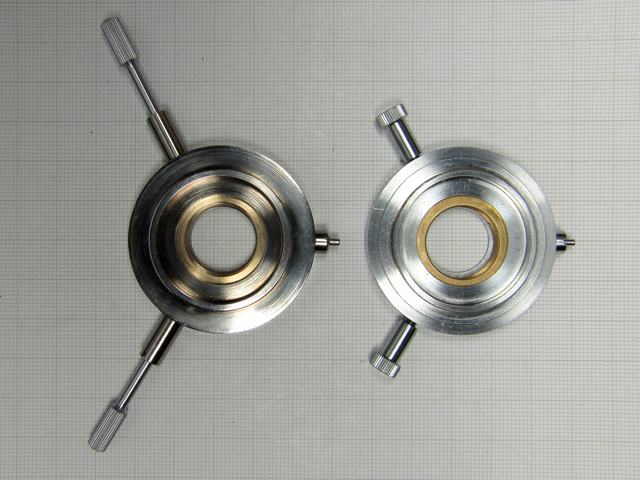
The two bases showing the upper side, on the left new one, on the right hand side the one used as a model for it
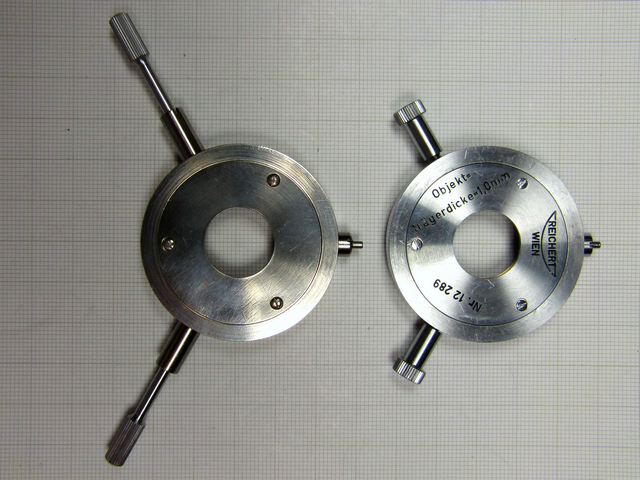
The bottom side of the two bases
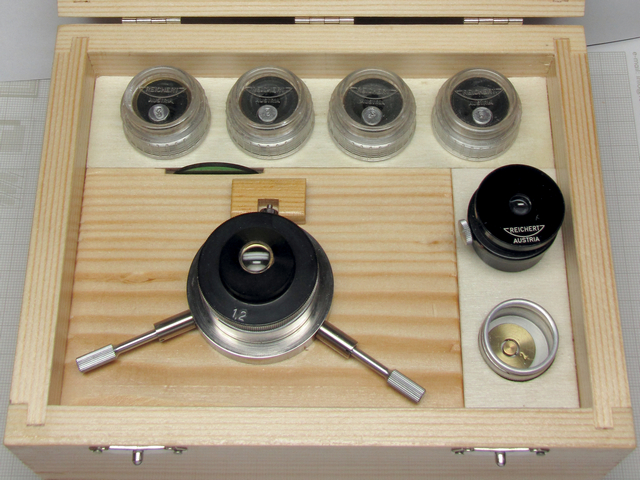
Finished DIY Phase Contrast Kit - Boxed
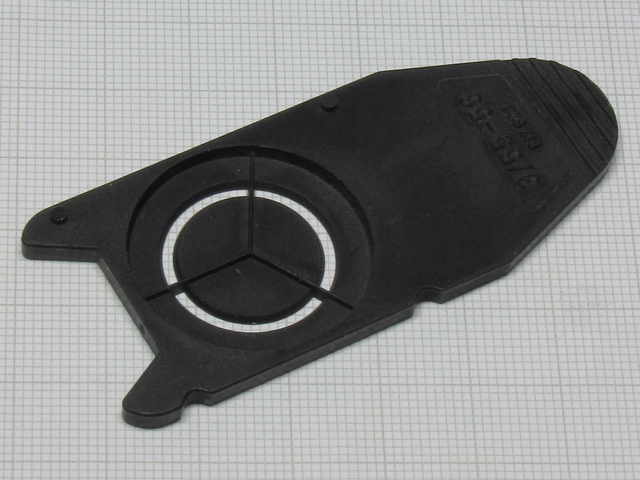
Leitz phase contrast annulus used in Laborlux D microscope
1. "Phase Microscopy - Is it worth having?" by Paul James
2. "Making a condenser annular ring for a phase contrast objective" by David Walker
3. "DIY Phase Contrast" by Tony Saunders-Davies
4. "Microscopy" G.E. Skvortsov, V.A. Panov 19695. "Optika Mikroskopov" V.A. Panov, L.N. Andreev 1976
Author's email: dushangrujich AT gmail DOT com Published in the September 2013 edition of Micscape Magazine. www.micscape.org